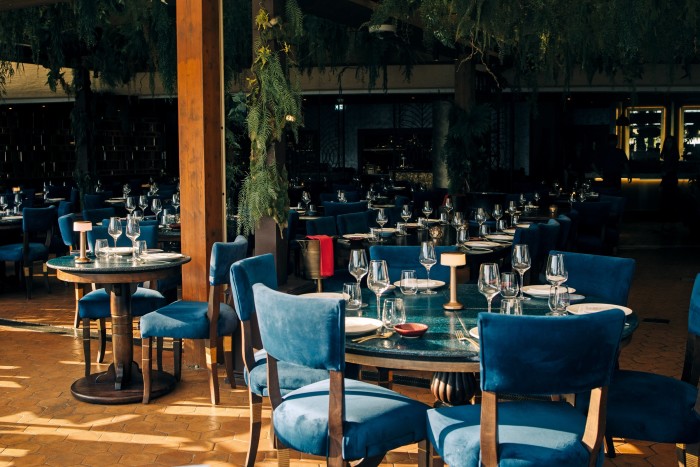An insider’s guide to Monaco

Roula Khalaf, Editor of the FT, selects her favourite stories in this weekly newsletter.
It was a big culture shock as a 10-year-old, moving from near Manchester to Monaco and going straight into a French Catholic school up on the Rock. My mother, Sharon, had been offered an interior-design job, so our family relocated and I ended up spending my teenage years there, which was a huge eye-opener. It was also here that Sharon was inspired to found Hewi. She loved Le Dressing, a pre-owned-designer-clothing store down in the port and wanted to take the joy of shopping there and combine it with technology to reach a wide audience.
Monaco is tiny, only about 2km square, so everyone is sort of living on top of each other, which makes for a tight-knit community. I think people move there for quality of life, and then privacy on top of that is so prized. There are no paparazzi allowed, and everyone looks out for each other, which is what makes it so safe. But people are also guarded, because if you think of the level of wealth there, everyone is after something, so it can be quite a closed-off place.

I live in the Cotswolds now, where I run Hewi along with my mother and sister, but I go back to Monaco as much as I can, usually in summer. If I go for the weekend, I’ll end up spending one of those days at the beach, either at Larvotto, where you can just turn up and pay for one of the beds and hang out all day, or at Monte Carlo. They are both beautiful, but Monte Carlo beach is really spectacular: you go for the views, but you can also eat great food or go jet-skiing.
A lot of the cultural activities are up at the Rock, which you have to walk up to if you’re just visiting – it’s a bit of a hike but it’s good fun. There’s the Oceanographic Museum, the Prince’s Palace and the big Cathedral of Our Lady Immaculate too, which is really beautiful. There’s also an outdoor cinema projected onto the back of the prison, which is a bit odd. Monaco can often be slightly surreal.


The city is broken up into different areas – there’s the well-known Casino Square in the centre, and then you’ve got the Jardin Exotique, which has a beautiful cactus garden and basketball courts, and is more used by locals. Fontvieille has the Columbus Monte-Carlo Hotel, which was co-founded by [former racing driver] David Coulthard, and then you’ve got the main port, where all the yachts are. Everywhere is so easy to walk to, which is the beauty of the city.

One of the interesting things about Monaco is how international it is; at school, there were probably only 15 people in my class, but there might be 12 different nationalities. I would say that this has been the main driver for change here; the language on restaurant menus is no longer just French and you have restaurants like Nobu and Buddha-Bar, which you’d have never imagined this old, Monégasque principality allowing in. They’ve definitely tried to modernise themselves in that way.
I love Blue Bay restaurant, where you can go at 5am if you want a burger, and also Sass Cafe, which is down on the beach at Larvotto, for when your dinner turns into a party. The view and the food at Coya make for an unforgettable evening – I love the ceviche there, or slow-cooked pork ribs. It’s the perfect prelude to a night out at Jimmy’z nightclub next door. Up on the Rock, you’ll find some nice, small family-run restaurants, but nowhere else is really that casual, and most places come with white-glove service. But the hotel lobbies are good places to go if you want to just grab a quick bite – I like the Crystal Lounge in the Hermitage Hotel.


Of course, Monaco is best known for the Grand Prix, which sees the entire city shut down for the event. The beauty of it is recognised, and it’s just brilliant. There’s something for everyone – you’ve got the historic Grand Prix, which brings out one kind of audience, and then the main event, which attracts an international crowd. Everyone opens their homes, so you can sit on balconies and watch the race. It’s an event where people come together. But it’s also wild, the Grand Prix – if you go to a nightclub, a bottle of water can cost €100.
When I say I grew up in Monaco, some people’s faces screw up because of the negative connotations that come with the city, but others want to know more, because they’re so fascinated by the principality. There is just nowhere else like it, in terms of geographical location alone. And if you’re into people-watching, it’s probably the most incredible place you can go.
Comments